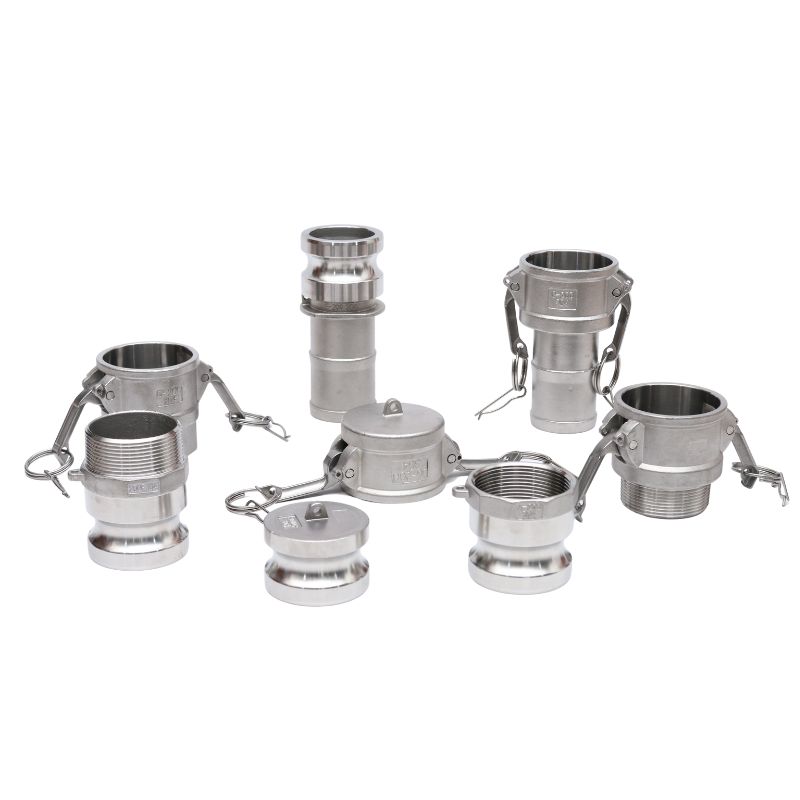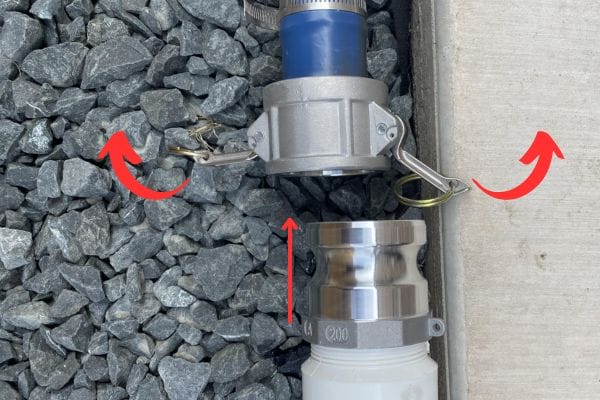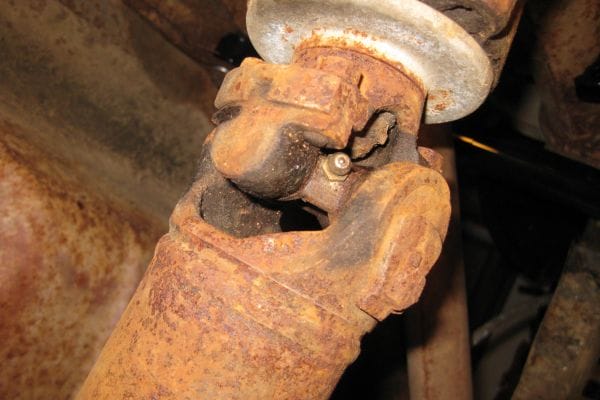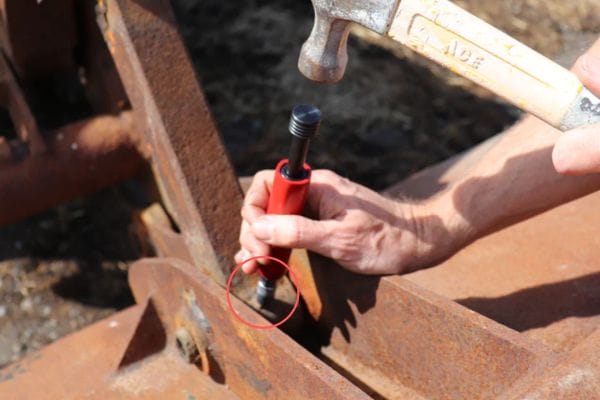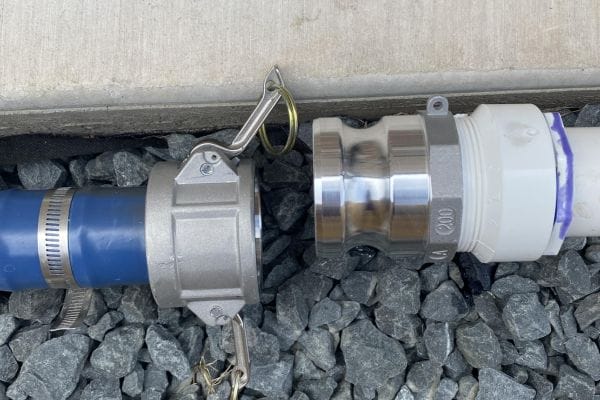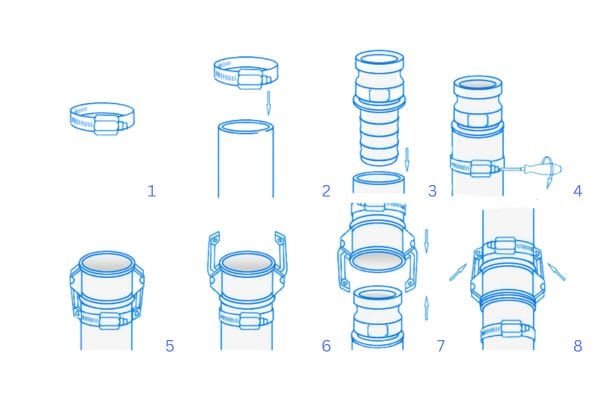Grease fittings play a crucial role in keeping machinery and equipment running smoothly by ensuring that parts receive the right amount of lubrication. Regular lubrication through grease fittings helps prevent friction, wear, and overheating, ultimately extending the lifespan of critical components like bearings, joints, and hydraulic systems. Without proper lubrication, machinery can experience costly damage, downtime, and decreased efficiency.
Why a Grease Fitting Won’t Take Grease: Top Causes
Clogged Grease Fittings: How Debris Affects Function
What Causes Clogging? Grease fittings can become clogged due to dirt, rust, or hardened grease buildup inside the fitting or grease passage. This typically happens when equipment is used in harsh environments or not regularly maintained.
Impact of Clogs on Grease Flow A clogged grease fitting prevents the proper flow of lubricant, leading to insufficient lubrication of moving parts. This can cause overheating, excessive wear, and even catastrophic failure of components that rely on grease for smooth operation.
How to Spot a Clogged Grease Fitting One of the easiest signs is when the grease gun fails to inject grease into the fitting, or the grease is leaking out around the fitting. If the fitting is visibly dirty or damaged, it’s a likely sign of a blockage.
How to Fix It Regular cleaning and inspection of grease fittings can prevent clogs. If a clog is suspected, use a grease fitting cleaner or needle to clear out debris and ensure proper grease flow.
Worn or Damaged Grease Fitting Seals
The Role of Seals in Grease Fittings Grease fitting seals are designed to create a tight barrier that prevents contaminants from entering the fitting and lubricants from leaking out. Over time, these seals can wear out due to friction, age, or exposure to extreme temperatures.
How Worn Seals Affect Performance When the seal is damaged or worn, grease may escape around the edges of the fitting, preventing proper lubrication and causing dirt or moisture to enter, which can lead to rust and corrosion.
How to Identify Worn Seals Look for signs of grease leakage around the fitting, or notice if the fitting is difficult to press into with a grease gun. Worn seals are often a primary cause of poor lubrication.
Fixing Damaged Seals Replace damaged seals with high-quality, compatible seals to ensure a proper fit and seal. Regular inspections can catch seal wear early, before it affects the fitting’s performance.
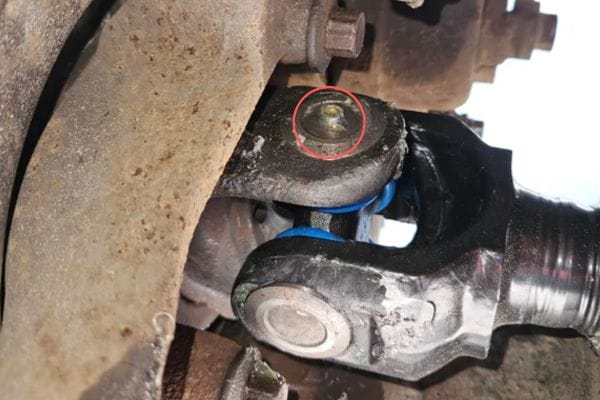
Air Blockage: When Air Pockets Prevent Grease Flow
Understanding Air Blockages in Grease Fittings Air pockets can form inside the grease fitting, particularly when air enters the system during the initial lubrication or after maintenance. This trapped air creates resistance that blocks the flow of grease.
How Air Affects Grease Flow When air is trapped inside the grease fitting, it prevents the grease from entering the desired components. This can result in insufficient lubrication and cause parts to run dry, which may lead to increased friction and wear.
Symptoms of Air Blockage If your grease gun isn’t dispensing grease effectively or if there’s resistance when pressing the nozzle, air pockets might be preventing grease from entering the fitting properly.
How to Resolve Air Blockages To eliminate air from the system, lightly press the grease gun while holding it against the fitting, allowing the air to escape before pumping in the grease. Sometimes, manually pushing out air by using a manual grease gun purge technique is necessary.
Improper Lubricant Choice or Application
Choosing the Right Grease for Your Fitting Not all grease is created equal. Using the wrong type of lubricant (too thick or too thin) can result in grease failing to properly lubricate the components. For example, a grease that is too thick may not flow easily through the fitting, while a thin lubricant might not provide adequate protection.
How Wrong Grease Affects Performance Using improper grease or incorrectly applying it can lead to over-lubrication, under-lubrication, or poor performance. Both scenarios can cause damage to machinery and compromise component life expectancy.
How to Choose the Right Lubricant Always consult the manufacturer’s specifications to determine the correct type of grease for your equipment. Consider the environmental conditions, temperature ranges, and the type of machinery in question to select the best lubricant.
Best Practices for Grease Application Apply the grease at the correct pressure to avoid overfilling and ensure that all moving parts are evenly lubricated. Use a high-quality grease gun and make sure the nozzle is properly sealed to prevent air from entering the system.
Grease Fitting Misalignment
What Is Grease Fitting Misalignment? Misalignment occurs when the grease fitting is not properly positioned in relation to the component it’s meant to lubricate. This can happen during installation or due to physical shifts in the machinery over time.
How Misalignment Affects Grease Flow When the grease fitting is misaligned, it may not be able to make a proper connection with the grease gun, leading to difficulty in dispensing grease. Misalignment also reduces the effectiveness of lubrication, preventing grease from reaching all the necessary parts.
Symptoms of Misalignment Difficulty in attaching the grease gun to the fitting, excessive resistance during greasing, or uneven distribution of grease are signs of misalignment.
How to Fix Misalignment Ensure that grease fittings are properly installed in alignment with the lubricated components. This may involve adjusting the positioning of the fittings or replacing damaged parts. Regular maintenance and checks can help detect misalignment early on.
Identifying Grease Fitting Issues
Signs Your Grease FittingIsn’t Taking Grease
Resistance in the Grease Gun One of the first indicators that a grease fitting isn’t taking grease is difficulty in applying grease. If the grease gun is hard to pump or if it feels like there’s resistance when attempting to inject grease, this could be a sign that the fitting is clogged or otherwise obstructed.
No Grease Flow or Grease Leaks Another sign is that no grease is coming out of the fitting even after multiple attempts. In some cases, you might notice grease leaking around the fitting or from the grease gun itself, indicating improper sealing or a blockage preventing proper flow.
Grease Backing Up If grease starts to back up out of the fitting when you apply pressure, it’s a clear sign that there’s a clog or buildup preventing proper grease flow, or the fitting might be damaged.
How to Tell if the Grease Fitting Is Clogged or Damaged
Visual Inspection Examine the grease fitting for visible signs of damage or debris. Look for dirt, rust, or old grease around the fitting. A clogged or worn fitting may have visible buildup or discoloration.
Check for Blockages To check for a clog, remove the grease gun and inspect the fitting using a small wire or needle to probe inside. If you encounter resistance, it’s likely clogged. If you can’t get any grease flow, it’s time to check for a more serious obstruction deeper within the fitting or lubrication passage.
Damage to the Fitting Over time, grease fittings can wear out or get damaged due to misuse, over-tightening, or exposure to harsh environments. Look for cracks, wear marks, or bent parts that could prevent the fitting from sealing properly.
Testing Grease Flow If a small amount of grease still flows out, it might suggest a partial clog or damage, meaning that the fitting isn’t fully functional but still working in a limited capacity. A complete failure will prevent any grease from being dispensed.
Common Symptoms of a Faulty Grease Fitting
Grease Not Reaching Key Components If you’re experiencing poor lubrication in parts that rely on grease fittings, like bearings or joints, this could be a sign that the fitting isn’t functioning correctly. Without grease reaching these components, you may notice unusual wear, increased friction, or overheating.
Excessive Wear or Overheating When machinery components aren’t adequately lubricated, they can become overheated and wear out quickly. If you notice any of these signs, it’s time to inspect your grease fittings. A failure to lubricate could result in costly damage and system breakdowns.
Frequent Blockages or Leaking If you constantly experience grease leakage or clogging at the same fitting, it might be a sign of a damaged or worn-out fitting that needs replacement. Fittings should seal properly to prevent leaks while ensuring grease flow.
Troubleshooting Your Grease Fitting
Step-by-Step Troubleshooting Guide for Grease Fitting Problems
Step 1: Check the Grease Gun Before assuming the grease fitting is the problem, ensure your grease gun is in good working condition. Check for any signs of damage, such as cracks or leaks, and ensure it’s properly primed with grease. Also, verify that the nozzle is securely attached.
Step 2: Inspect the Grease Fitting for Damage or Wear Look for obvious signs of wear or damage on the fitting itself. If the fitting is cracked, worn down, or misaligned, it might not accept grease properly. In this case, a replacement is necessary.
Step 3: Examine the Grease Pathway If the fitting and grease gun appear to be functioning correctly, the issue may lie in the grease pathway. Check for blockages or obstructions in the line leading to the fitting. You may need to remove any fittings, hoses, or tubes connected to the system to inspect this thoroughly.
Step 4: Assess Grease Flow Once you’ve confirmed the grease fitting and its immediate connections are intact, proceed to check if grease flows properly when pressure is applied. If it doesn’t, this could indicate a more serious blockage or damage inside the fitting or grease passageway.
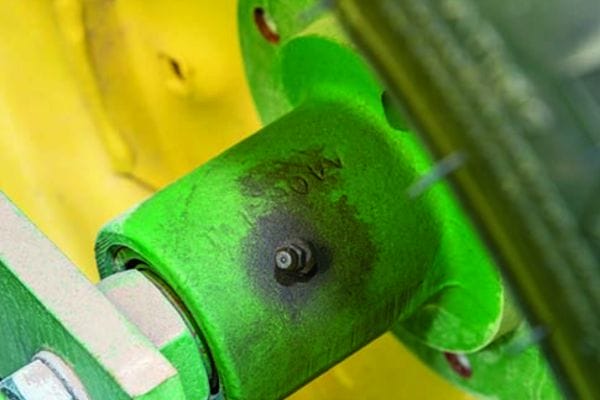
Inspecting the Grease Fitting and Grease Gun Connection
Ensure Proper Fit The connection between the grease fitting and grease gun should be tight and secure. Any loose connections can lead to grease leakage or poor grease flow. If the connection seems faulty, clean both the grease fitting and gun nozzle to ensure a proper seal.
Inspect for Leaks If grease leaks around the connection while pumping, it could indicate that the fitting’s seal is compromised, or the nozzle isn’t properly attached. Check for worn seals on both the fitting and grease gun, replacing them if necessary.
Check the Nozzle and Tip The nozzle and tip of the grease gun should fit snugly onto the fitting. If the tip is too large or small, it may not form a proper seal, making it difficult to inject grease. Use the correct size nozzle for the grease fitting you’re working with.
Checking for Obstructions in the Grease Pathway
Remove the Grease Fitting If there’s no grease flow despite a proper grease gun connection, carefully remove the grease fitting using the appropriate tool. Inspect the fitting’s interior and the grease passage for any obstructions, such as hardened grease, dirt, or debris.
Clear the Pathway Use a needle or specialized grease fitting cleaner to clear any debris from the fitting. If the fitting is excessively clogged, you might need to soak it in a degreaser solution to loosen the debris. Once cleared, reassemble and test the grease flow.
Check the Grease Line If the fitting seems clear but grease still isn’t flowing, inspect the grease line (hose or tube) for potential kinks, cracks, or obstructions. Ensure that grease can freely flow all the way from the grease gun to the fitting.
How to Test Grease Flow through the Fitting
Manual Test After checking the fitting and grease gun connection, manually apply pressure to the grease gun and observe whether grease flows freely. If the grease doesn’t flow, there could be a deeper issue with the fitting or its components.
Use a Clear Grease Hose If you’re still unsure about the flow, use a clear hose to connect the grease gun to the fitting. As you apply pressure, observe whether grease is visible moving through the hose. This can help you pinpoint any blockages or resistance in the system.
Alternative Testing Methods In some cases, testing grease flow by applying a small amount of air pressure to the line can help you identify hidden blockages. However, be careful not to apply too much pressure, as this can cause damage to the fitting or the components.
How to Repair a Grease Fitting That Won’t Take Grease
Simple Repairs You Can Do Yourself
Clear Clogs with a Needle or Cleaning Tool If the grease fitting is clogged, one of the first steps is to use a grease fitting needle or cleaning tool to clear out the obstruction. Insert the needle into the fitting to break up debris or hardened grease. You can also use a specialized grease fitting cleaner that helps dislodge any buildup.
Clean and Lubricate the Fitting Sometimes, grease fittings may become stiff or sticky due to old grease or environmental debris. Clean the fitting with a wire brush or rag to remove dirt and grease. After cleaning, apply fresh grease to ensure smooth operation.
Check and Tighten the Fitting Loose fittings can prevent grease from flowing properly. Use a wrench to tighten the fitting, but be careful not to overtighten, as this could damage the fitting or the surrounding components. Ensure that the fitting is firmly connected and properly aligned.
Repair or Replace Seals If the fitting is leaking grease due to a worn seal, you may be able to repair it by replacing the seal or O-ring. Make sure the replacement is of the same size and material as the original to prevent further leaks and ensure a tight seal.
When to Replace the Grease Fitting: Signs It’s Beyond Repair
Cracks or Visible Damage If the grease fitting is cracked, deeply worn, or severely deformed, it’s likely beyond repair and needs to be replaced. Damaged fittings can lead to grease leakage, contamination, or even further damage to the equipment.
Persistent Blockages After Cleaning If the grease fitting remains clogged despite your best efforts to clean it, it may indicate that the internal pathway is permanently blocked or that there is structural damage. In this case, replacement is necessary.
Excessive Leakage If the fitting continues to leak grease even after cleaning and sealing, this suggests a more serious problem. Over time, repeated leakage can damage surrounding components, making replacement the best course of action.
How to Replace a Faulty Grease Fitting
Step 1: Prepare the Equipment Before replacing the faulty grease fitting, ensure that the equipment is turned off, and the area is safe to work in. Gather the necessary tools, including a wrench, a new grease fitting, and thread sealant if required.
Step 2: Remove the Old Fitting Use a wrench to carefully unscrew the damaged grease fitting. Be mindful not to damage the surrounding parts. If the fitting is stuck, try applying penetrating oil to loosen it before attempting to remove it again.
Step 3: Clean the Fitting Area Once the old fitting is removed, clean the area to ensure there is no debris, old grease, or rust that could affect the new fitting’s performance. You can use a rag or wire brush to clean the fitting hole.
Step 4: Install the New Grease Fitting Screw the new grease fitting into place, making sure it’s aligned correctly. Tighten it securely with a wrench, but avoid overtightening. If necessary, apply thread sealant to the threads to prevent leaks.
Step 5: Test the New Fitting Once the new fitting is installed, use your grease gun to apply grease. Ensure that grease flows smoothly and the fitting is functioning properly without any leaks or resistance.
Dealing with Grease Fitting Leakage
Understanding Grease Fitting Leakage and Its Causes
What Causes Grease Fitting Leaks? Grease fitting leakage can occur due to several factors, including worn or damaged seals, improper installation, or over-tightening of the fitting. The pressure from the grease gun can cause seals to rupture, leading to leaks around the fitting. Environmental debris, dirt, or hardened grease can also compromise the seal integrity.
Impact of Leakage on Equipment A leaking grease fitting may not only waste valuable lubricant but also lead to contamination of surrounding components. Over time, this can cause dirt and debris to enter machinery, damaging critical parts and decreasing overall performance. Regular leakage can lead to increased wear and tear, resulting in costly repairs.
Identifying Leakage Points Leakage can occur at the point of connection between the grease fitting and the grease gun, or where the fitting meets the machine. Pay attention to areas where grease seems to escape, as this can guide you to the source of the problem.
How to Fix a Leaking Grease Fitting
Step 1: Tighten the Fitting If the leak is coming from a loose connection, simply tightening the grease fitting may solve the problem. Use a wrench to secure the fitting without over-tightening, which could damage the threads or cause other issues.
Step 2: Replace Damaged Seals or O-Rings If the fitting’s seal or O-ring is worn or damaged, replacing it is the best solution. Make sure to choose the correct size and material of seal to match the manufacturer’s specifications for optimal performance and leak prevention.
Step 3: Clean and Clear Obstructions Dirt or hardened grease can compromise the seal, causing leaks. Clean the grease fitting and surrounding area thoroughly before replacing the seal. Clear any obstructions in the fitting that might prevent the seal from sitting correctly.
Step 4: Use Thread Sealant (If Necessary) For particularly stubborn leaks, you can apply a thread sealant designed for grease fittings. This will create an additional barrier to prevent grease from escaping around the fitting’s threads.
Preventing Future Leakage: Tips and Tricks
Regular Inspection and Maintenance Inspect your grease fittings regularly to ensure they remain clean and free of debris. Early detection of wear or damage can prevent future leaks and prolong the life of your equipment.
Proper Lubricant Application Avoid over-pressurizing the grease fitting with too much grease, as this can force seals to fail and cause leaks. Use the correct type and amount of lubricant to ensure optimal function without stressing the fitting.
Use High-Quality Fittings and Seals Invest in high-quality grease fittings and seals to minimize the risk of leakage. Cheaper fittings may degrade faster, leading to frequent repairs and leaks.
Ensure Proper Alignment Misaligned grease fittings are more likely to develop leaks. Ensure that all fittings are properly aligned with the lubrication path to prevent uneven pressure and leakage.
Conclusion
By staying on top of inspections and addressing issues early, you can extend the lifespan of your equipment, avoid costly repairs, and keep everything running efficiently. Regular lubrication and care for your grease fittings are essential for the long-term health of your machinery—ensuring it operates at its best and minimizes downtime.
FAQ
What should I do if my grease fitting won’t take grease?
If your grease fitting won’t take grease, start by inspecting the fitting for clogs or damage. Clean the fitting using a needle or cleaning tool to remove any obstructions. Tighten loose fittings and check for proper grease flow.
How do I know if my grease fitting is clogged?
Signs of a clogged grease fitting include resistance when using the grease gun, grease backing up or leaking, and no grease coming out when pressure is applied. If you notice these signs, inspect and clear the fitting using a needle or grease fitting cleaner.
Can I fix a leaking grease fitting myself?
Yes, you can fix a leaking grease fitting by tightening the connection, cleaning the fitting, and replacing any worn seals or O-rings. If the fitting is still leaking after these steps, it may need to be replaced.
What causes grease fittings to leak?
Grease fittings can leak due to damaged seals, worn-out fittings, improper installation, or over-tightening. External factors like dirt or debris can also compromise the seal, leading to leakage.
How often should I maintain my grease fittings?
It’s recommended to inspect and maintain your grease fittings regularly—at least once every few months, or more frequently in harsh environments. Regular maintenance helps ensure proper lubrication and prevents costly equipment damage.
When should I replace a grease fitting?
Replace a grease fitting if it’s severely damaged, cracked, or if cleaning and repairs don’t resolve the issue. If the fitting continually leaks or doesn’t allow grease to flow properly despite repairs, it’s time for a replacement.






